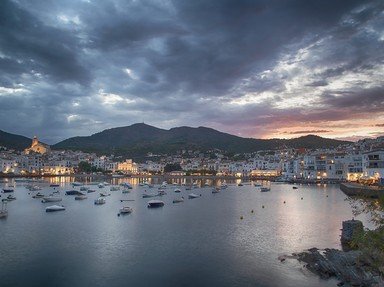Quiz Answer Key and Fun Facts
1. Baku is the oil-rich capital city of Azerbaijan. Where in Azerbaijan is it located?
2. Baku's Old City dates back to at least the 12th century. How is this part of Baku delineated from the modern city of Baku?
3. A 15th century palace in Baku, Azerbaijan has been named a UNESCO world heritage site. Which dynasty originally built the palace?
4. The Maiden Tower is part of Baku's Old City. What was the original purpose of the building?
5. Examining the photo, what is the main religion in Azerbaijan?
6. The Ateshgah of Baku, also called "The Fire Temple of Baku" was built as a place of worship but was later abandoned. What did it become in 1975?
7. Kirov Park in Baku, Azerbaijan, was an amusement park while the Bolsheviks were in charge during the period of the Soviet Union. When the Soviet Union collapsed what did the site, now known as "Martyr's Lane" revert to?
8. The Azerbaijan House of Government in Baku is a very elegant building despite it being completed in 1952. Which realm ruled over Azerbaijan at this time?
9. The Flame Towers in Baku are designed to symbolise fire. What covers the facades of these towers?
10. The Azerbaijan Carpet Museum is built to look like a rolled up carpet. Which Austrian poetic architect designed it?
Source: Author
1nn1
This quiz was reviewed by FunTrivia editor
agony before going online.
Any errors found in FunTrivia content are routinely corrected through our feedback system.
